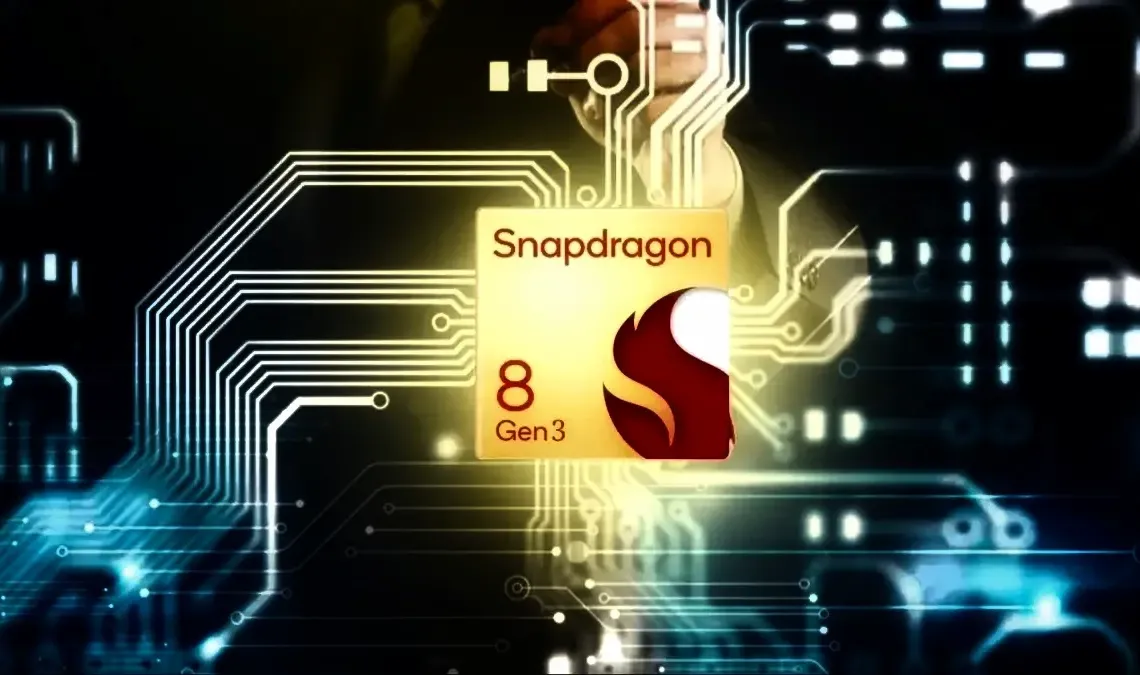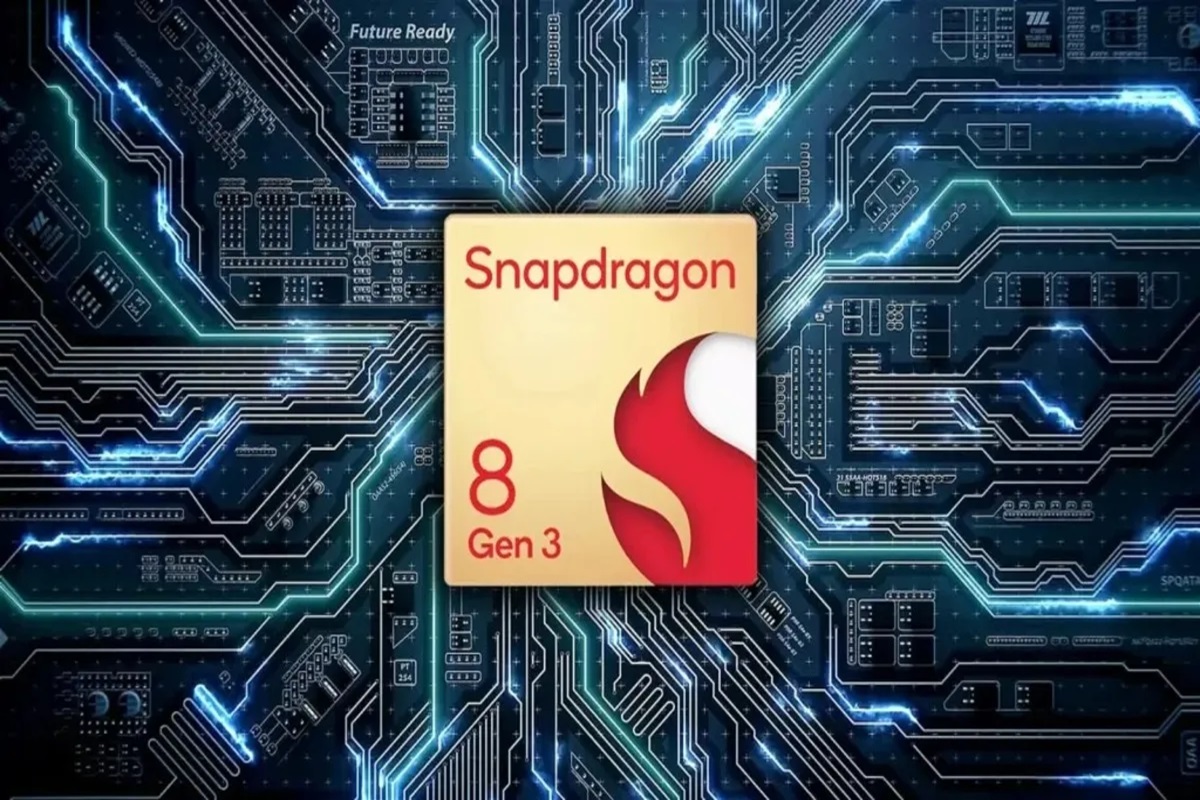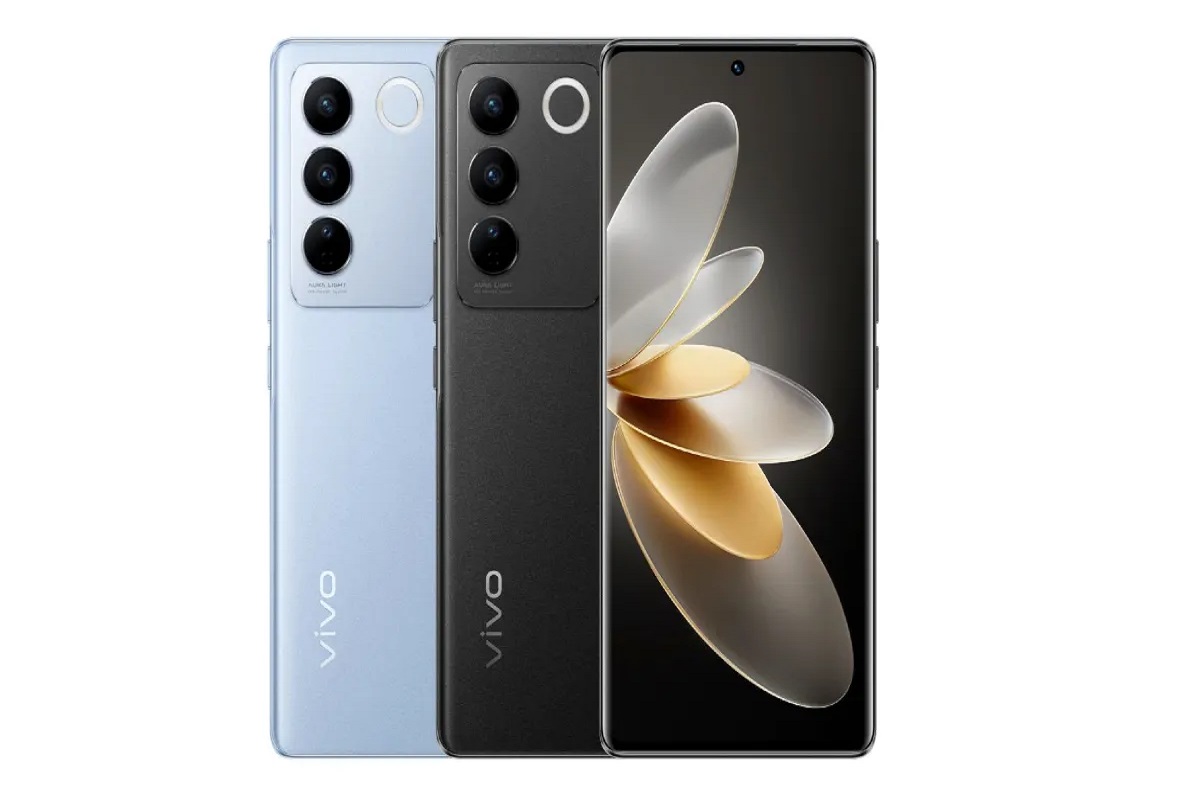In the world of mobile technology, a new superstar is emerging, and it goes by the name of Qualcomm Snapdragon 8 Gen3 SoC. This chip is creating quite a buzz, thanks to its impressive benchmark scores that are expected to surpass the 2 million points mark on the AnTuTu platform. If these predictions hold true, the Snapdragon 8 Gen3 could become Qualcomm’s most powerful smartphone SoC ever, outshining its predecessor, the Snapdragon 8 Gen2, which had an average score of 1.6 million points.

Let’s dive into the specifics of these benchmark results. The CPU performance of the Snapdragon 8 Gen3 is shining brightly with a score of over 440,000 points. This is a noticeable improvement over the Snapdragon 8 Gen2, which scored 380,000 points. But where the real transformation takes place is in the GPU department. The Snapdragon 8 Gen3’s GPU score soars past 840,000 points, a significant leap compared to the previous generation’s score of around 600,000 points.
The device that underwent testing with the Snapdragon 8 Gen3 is an impressive powerhouse, boasting 16GB of LPDDR5T memory and a capacious 1TB UFS 4.0 storage. These specifications promise lightning-fast performance and ample storage space to meet all your needs.
Excitingly, this formidable chipset is set to make its debut at the end of October, with rumors suggesting that the Xiaomi 14 series will be the first smartphones to feature it. With groundbreaking benchmark scores and cutting-edge features, the Snapdragon 8 Gen3 is on the verge of redefining what’s possible in the world of mobile technology. Users can look forward to a truly unparalleled experience.
As we eagerly await the launch of this highly-anticipated SoC, it’s clear that Qualcomm is pushing the boundaries of mobile technology. The Snapdragon 8 Gen3 is poised to empower smartphones with unprecedented processing power, graphics capabilities, and storage capacity. This leap in performance is not only exciting for tech enthusiasts but also for everyday users who rely on their smartphones for various tasks.
One of the key takeaways from the Snapdragon 8 Gen3’s benchmark scores is the substantial increase in GPU performance. This improvement is particularly noteworthy as it directly impacts graphics-intensive tasks such as gaming and multimedia consumption. With the Snapdragon 8 Gen3, users can expect smoother gameplay, stunning visuals, and a more immersive entertainment experience.
The CPU performance of this chipset is no slouch either. With a score of over 440,000 points, it demonstrates Qualcomm’s commitment to delivering top-tier processing power. Whether you’re multitasking, running demanding applications, or simply navigating your smartphone’s interface, the Snapdragon 8 Gen3 is engineered to provide swift and responsive performance.
Additionally, the generous 16GB of LPDDR5T memory ensures that you can switch between apps seamlessly and keep numerous tasks running without a hitch. This is particularly beneficial for users who rely on their smartphones for productivity and efficiency.






